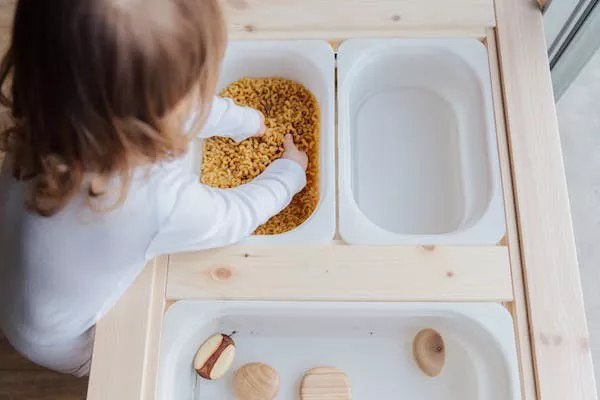Breastfeeding mothers often find themselves navigating a maze of dietary restrictions and considerations to ensure the health and well-being of their babies. One common question that arises is whether it’s safe to indulge in certain types of foods, including fast food options like Domino’s Pizza. While it’s understandable to crave convenience and flavor, it’s essential to evaluate the nutritional content and potential implications of such choices while breastfeeding.
Understanding Breastfeeding and Nutrition
Breast milk is often touted as the optimal source of nutrition for infants, providing a unique blend of essential nutrients, antibodies, and enzymes crucial for growth and development. As such, the dietary choices of breastfeeding mothers can directly impact the composition and quality of their breast milk.
Nutrient-rich foods are typically encouraged during breastfeeding to support both maternal health and the nutritional needs of the baby. However, the specific dietary requirements can vary depending on factors such as the mother’s overall health, any existing medical conditions, and the age and development of the infant.
Assessing the Nutritional Profile of Domino’s Pizza
Before delving into whether Domino’s Pizza is suitable for breastfeeding mothers, it’s essential to examine its nutritional composition. Domino’s offers a variety of pizza options, each with its own combination of ingredients, making it crucial to consider the specific pizza in question.
In general, traditional Domino’s pizzas are high in calories, carbohydrates, and fat, with varying levels of protein depending on the toppings. While some toppings may add essential nutrients such as protein (e.g., chicken, vegetables), others may contribute excess sodium, saturated fat, and processed ingredients.
Addressing Potential Concerns
When it comes to consuming Domino’s Pizza while breastfeeding, several concerns may arise:
1. Nutritional Balance:
- Protein: Protein is essential for both the mother and baby, supporting tissue repair and growth. While some pizza toppings like chicken can provide protein, it’s essential to ensure an adequate intake of other nutrients.
- Fats: Healthy fats are crucial for brain development in infants. However, Domino’s Pizza may contain high levels of saturated and trans fats, which should be consumed in moderation.
- Carbohydrates: Carbohydrates provide energy, but excessive intake can lead to weight gain. Opting for whole grain crust and limiting high-carb toppings can help maintain a balanced diet.
- Vitamins and Minerals: Pizza may lack essential vitamins and minerals found in fresh fruits, vegetables, and whole grains. Supplementing with nutrient-rich sides or incorporating other sources into the diet can help address this deficiency.
2. Food Sensitivities and Allergies:
- Certain ingredients commonly found in pizza, such as dairy and gluten, may trigger sensitivities or allergies in breastfeeding infants. Monitoring the baby’s reactions and adjusting the maternal diet accordingly is essential.
3. Food Safety:
- Pregnant and breastfeeding women are advised to avoid certain foods that pose a higher risk of foodborne illness, such as unpasteurized dairy and undercooked meats. While Domino’s Pizza typically uses pasteurized cheese and thoroughly cooks its toppings, ensuring proper food handling and hygiene is still important.
Making Informed Choices
While enjoying Domino’s Pizza occasionally may not pose significant risks to breastfeeding mothers or their infants, moderation and mindfulness are key. Here are some tips for making informed dietary choices:
1. Balance and Moderation:
- Incorporate a variety of nutrient-dense foods into your diet, including lean proteins, whole grains, fruits, and vegetables.
- Reserve indulgences like pizza for occasional treats rather than regular staples of your diet.
2. Customization:
- Opt for healthier pizza options, such as thin crust or veggie toppings, to reduce calorie and fat content.
- Consider customizing your pizza with nutritious toppings like grilled chicken, spinach, mushrooms, and bell peppers.
3. Supplemental Nutrition:
- If concerned about nutrient intake, consider supplementing your diet with prenatal vitamins or specific nutrients recommended by your healthcare provider.
4. Hydration:
- Stay hydrated by drinking plenty of water, especially while breastfeeding, to support milk production and overall health.
5. Observation and Adjustment:
- Monitor your baby’s reactions to your diet, including any changes in behavior or digestion, and consult with a healthcare provider if concerns arise.
- Be prepared to adjust your diet based on your baby’s needs and any observed sensitivities or allergies.
Conclusion
In conclusion, while enjoying Domino’s Pizza occasionally as a breastfeeding mother may be permissible, it’s essential to prioritize a balanced and varied diet that meets both maternal and infant nutritional needs. Paying attention to ingredient quality, portion sizes, and overall dietary habits can help mitigate potential risks and promote optimal health for both mother and baby. As always, consulting with a healthcare provider or lactation specialist can provide personalized guidance and support in navigating dietary choices during breastfeeding.


